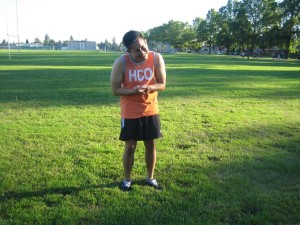The ulna is a long forearm bone on the side of the little finger that extends from the wrist up the humerus. Any pain that develops on this area can be due to various conditions. The pain can be caused by tendinitis, tenosynovitis, arthritis, fractures and other health conditions.
Most cases of ulna pain can be triggered by overuse of the forearm and wrist either job-related, working out or while playing sports. The doctor must diagnose the ulna pain before any treatment can be started. Nevertheless, you can encourage the individual to rest and apply ice as a first aid measure. The moment the swelling has reduced; there are basic exercises that can help relieve the ulna pain.
Considerations to bear in mind
Some cases of ulna pain can be caused by a tear in the ulnotriquetral (UT) ligament which was recently discovered. The ligament is situated where the two forearm bones attach at the wrist. Take note that the pain can be throbbing or constant when the wrist is used. This type of injury will not show up in an X-ray, MRI or arthroscopic surgery.

A diagnosis is made by simply pressing the ulnar fovea which is located at the tip of the ulna bone close to the wrist. The pain can be treated with arthroscopic surgery once a diagnosis is made. After a 6-week period of recovery, most individuals are free from pain and full functionality of the wrist is restored.
What are the effects of rest and ice application?
Most cases of ulna pain can be treated with rest. By encouraging the individual to rest, this will help prevent further aggravation of the injury. Once ice is applied, it will provide enough time to minimize the pain and swelling.
The application of ice will cause vasoconstriction which regulates the swelling and pain by reducing the flow of blood to the affected area. Take note that ice is typically compressed against the injured area. Additionally, elevating the forearm higher than the heart can also help reduce the swelling and pain.
Medications
The commonly used medications for ulna pain include anti-inflammatory drugs such as naproxen and ibuprofen in order to minimize the pain and inflammation. Take note that these medications are Cox-2 inhibitors that will limit the natural response of the body to injury. Another alternative are topical creams since they are effective in reducing mild ulnar pain. As for severe pain, steroid medications might be prescribed by a doctor.
Exercise
The moment the swelling subsides, the individual can perform stretching and strength-building exercise to help rehabilitate the upper or lower ulna bone. The stretching exercises can help loosen up the muscles. These exercises typically include moving the hand in different directions.
The individual must limit the range of motion to movements that are free from pain. Once stretching can be done without triggering pain, strength-building exercises can be added. Always remember that exercise helps stimulate the flow of blood to the affected area.
